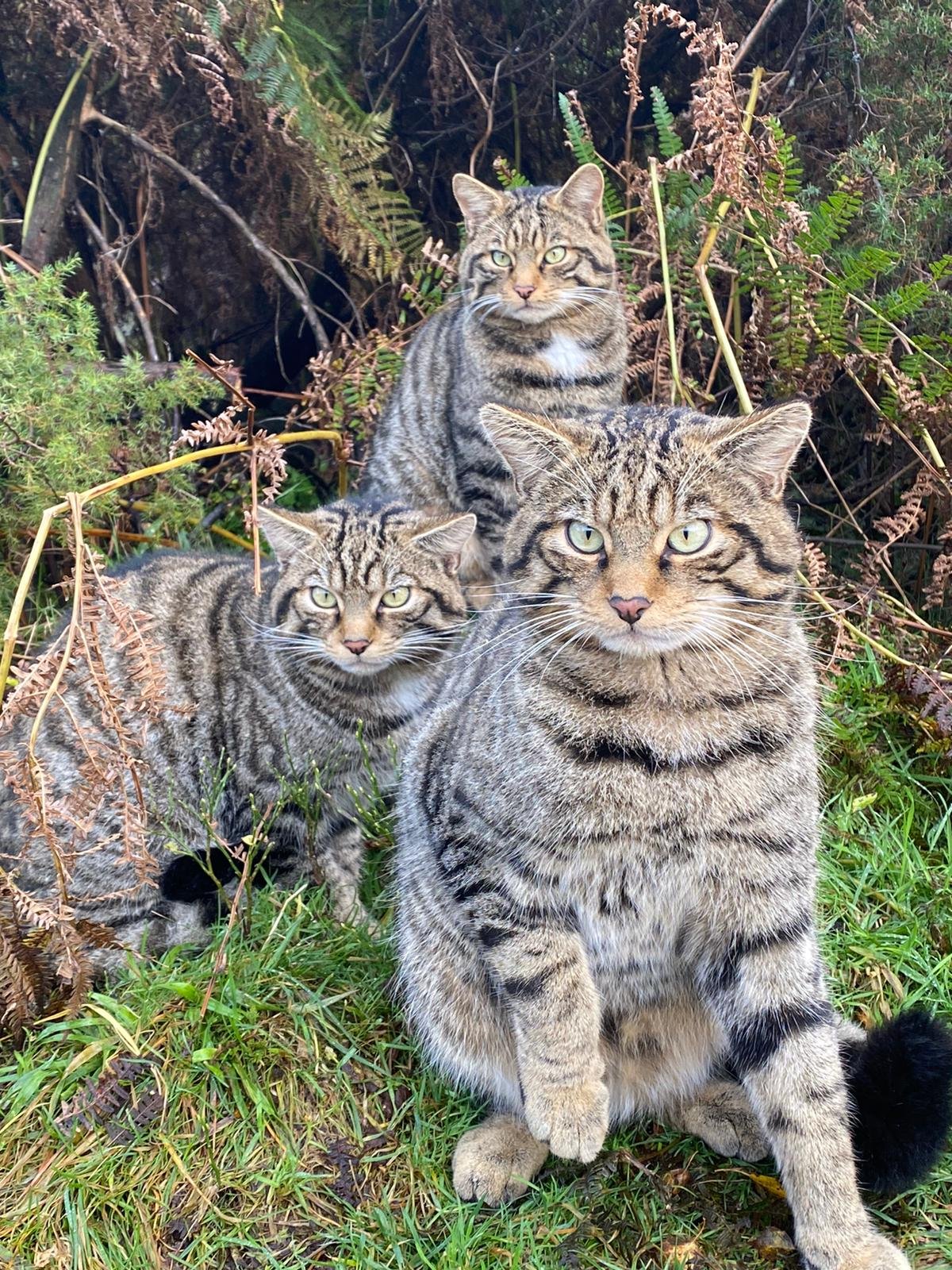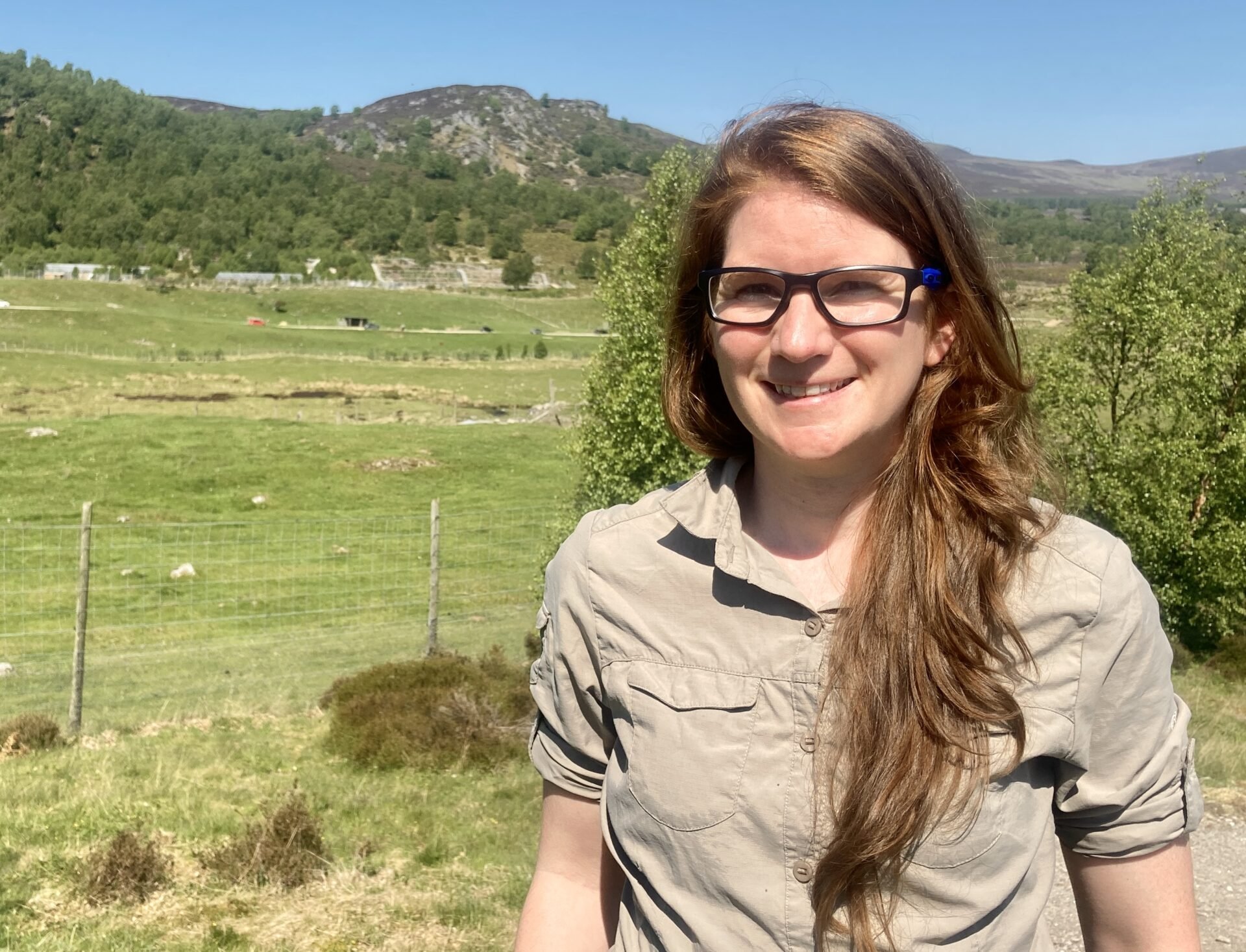Releasing Wildcats in Scotland: An Interview with Dr Helen Senn
Dr Helen Senn is the Head of Conservation & Science at RZSS and Project Lead for the Saving Wildcats Project. Interview by CEO Matt Larsen-Daw.

"It takes a village to save a species." - Dr Helen Senn
Last month, our CEO Matt Larsen-Daw was welcomed to the base of the Saving Wildcats project at the Highland Wildlife Park in the Cairngorms, where he was privileged to meet some of the team of experts behind the historic release of wildcats in the Cairngorms.
While headlines focus on the excitement of the long-anticipated release of the captive-bred animals into the landscape that began in early June, work has been underway for years to ensure maximum chances of success, and many more years of work lie ahead to monitor, adapt and evaluate the impact of the release.
My visit started at the collection of low buildings tucked away near the visitor hub of the Highland Wildlife Park, providing office space and a veterinary centre not only for the Saving Wildcats project, but all the conservation and animal welfare work across the site.
Estelle, one of the wildcat keepers based at the centre showed me the complex array of CCTV cameras that provide real-time insight into the movements, welfare and behaviour of the wildcats in the conservation breeding for release centre. The enclosures themselves are some distance from the buildings – keeping human contact to a minimum. It is vital that wildcats intended for release do not become accustomed to human interaction, since it could influence their behaviour and make them less able to survive independently in the wild. It is the job of Estelle and her colleagues to keep detailed notes of the behaviours exhibited by the wildcats – especially how they react when keepers are required to approach or enter the enclosures to clean or leave food.
I was interested to know how captive-bred animals can be enabled to gain the skills required to be self sufficient in the wild, given that live prey cannot be provided due to strict legal restrictions. Estelle explained that food is provided in various ways to encourage problem-solving, and at intervals that require them to cache food and not depend on a regular supply. One of several innovations employed to enable hunting behaviours to be nurtured is to provide dead mice in boxes that auto release after a squeak sound is played, but then close after a short time if the food has not been claimed.
After watching some of the wildcats padding around their enclosures, which are rich in foliage, climbing materials and look-out points, I was accompanied up a steep hill to a viewing point above the site by Dr Helen Senn, Head of Conservation and Science at the Royal Zoological Society of Scotland, and also the project lead for the Saving Wildcats project. Overlooking the wildcat enclosures on one side, and with a view over the vast Cairngorms landscape on the other, I chatted to her about the exciting and challenging aspects of her job and the Saving Wildcats project.
MATT: Could you explain a little about your role and the other members of your team?

DR SENN: My role really is overseeing the overall direction of the project. So I chair the project management group, which is the partnership of RZSS, NatureScot and the Cairngorms National Park Authority and Forestry and Land Scotland, but also we are partners with the Junta de Andalucía who are responsible for the Iberian Lynx reintroduction project in Spain, and Nordens Ark, which is a zoo in Sweden. We have a really big team on the project. I'd say it takes a village to save a species and we've got lots of different specialists.
We have our field team, led by Dr. Keri Langridge, and our conservation breeding team, led by David Barclay and in total we've got around 14 staff and we also have additional volunteers that are working on the project. So it's a big team.
MATT: What stage is the Saving Wildcats project at right now?
DR SENN: In about a week's time, we are going to start wildcat releases, so we're close to a very big milestone.* At the moment we've got 22 cats that are being prepared for release in the wild in our pre-release enclosures, which are the large, naturalistic, open-top enclosures. None of those cats have been collared so far. We'll be collaring some more of them in the coming days and we're going to be starting the first releases really from next week onwards.
So big, big exciting time for the project. Lots of nerves!
*NOTE: The release of 22 wildcats into the Cairngorms National Park began last week as part of landmark efforts to save this species from extinction within Scotland. [16/6/2023]
MATT: What challenges lie ahead, and how are you and your team working to minimise risks?
DR SENN: There's a lot of challenges. I think everybody's probably aware that life in the wild is hard for carnivores, so we are thinking about all sorts of challenges and obviously there's all sorts of challenges that have led to the wildcat being on the brink of extinction as well. I guess the things that I'm worrying about most are road traffic mortality, and we know that persecution of predators is not a thing of the past, so that's an area of concern.
We've been working very closely with all of the land managers and landowners around the release site to talk about human wildlife conflict, and also to make sure that we minimise any risks to the Wildcats. Also, we’re here in the Cairngorms National Park - we know that we could have a very harsh winter. Or we could have a mild winter and that could potentially have an impact on the release. Our field team have done lots of work on the release site suitability; things like looking at the prey base. But of course we are releasing captive-bred cats into the wild, so there's a potential risk that they won't be as efficient hunters as perhaps they would be naturally. So we're doing a lot of work around that in the conservation breeding for release centre.
One of the big risks and an ongoing issue is hybridisation. We are releasing the cats into an area where we know there's very low numbers of feral domestic cats and we've been doing trap-neuter-vaccinate-release around the release site. But of course, that's still going to be an issue to watch for.
So really we're at the very start of this project and we are going to be doing a lot of learning as we go along. All of the cats are going to have GPS collars on them. We've got a fixed camera trap array across the release site. We're going to be doing things like dietary metabarcoding to monitor what the cats are eating and we'll be learning from every successive year of the releases. So we are hoping to release 22 cats this year and then 20 next year and 20 the following year. But we'll see!
Every year we'll be using adaptive management to hopefully understand more about what's worked and then improve our methods for next year.
MATT: Can you say a little about the landscape the wildcats will be entering?
DR SENN: Standing here on the viewpoint in the Highland Wildlife Park we’re looking over the Cairngorms Connect landscape, which is also going to be the release site for the Saving Wildcats partnership. And you can see, if you look across from Loch Insh here, it's really a large tract landscape on the other side of the bay from where we are here at Highland Wildlife Park. It's a partnership between four partners, RSPB Scotland, Wildland Limited, Forestry and Land Scotland and NatureScot.
Those partners are all working together under a vision to restore the habitat over the next 200 years. And really from our perspective, as Saving Wildcats, it's ideal to be able to work in an area where there's conservation minded partners all working together on habitat management and restoration.
Because if we're going through all of the effort to release wildcats and taking all that effort over managing the individual cats, it's really important that they're going back to a place in the wild where they will be as safe as possible. Obviously the field team have been working across the release site to look at the prey base and to monitor the presence of feral cats and look at all sorts of other aspects to deal with threat over the last few years in preparation for the releases.
MATT: What is the focus for the team after the wildcats are released?
DR SENN: Once we release the cats from the breeding center, then it's over to our field team led by Dr. Keri Langridge, who will be monitoring everything to do with the cats’ onward life in the wild. We'll be using GPS collaring technology, and camera trap arrays, which we've already been running across the release site. We’ll be looking at things like dietary metabarcoding, and ongoing prey surveys, and really continuing to monitor everything to do with the habitat.
The actual releases themselves will be staggered. So we are not going to be releasing all 22 animals in one go. They'll be staggered - small groups perhaps of four or five animals across different points across the release site.
MATT: Have there been any innovative scientific methods employed in this project?
DR SENN: We are really obviously using a lot of different scientific methods in a release. They're very interdisciplinary and a lot of what we are doing actually is modeled on the Iberian lynx reintroduction project in Spain, which is one of the most successful carnivore introductions that has happened. But perhaps one of the things that's a little bit more unusual about the Saving Wildcats project is the fact that we also need to manage hybridisation. So we've been using a lot of genetic technology in order to help us to understand that.
We’ve been screening all the cats in the breeding program to understand their levels of hybridisation and minimise it. And we've been using whole genome sequencing to understand more about the history and causes of hybridisation. We also use genetic technology to manage breeding and make the best breeding decisions that we can. We're going to be using genetic technology to do dietary metabarcoding.
So that's probably one of the more innovative angles. But actually, reintroduction projects are very interdisciplinary. We've got ecologists, we've got our animal behavior experts, and everywhere we are using the latest scientific technology if we can in order to support the decision-making on the ground.
--
Follow the Saving Wildcats project, and support by sponsoring a wildcat, at https://savingwildcats.org.uk/
